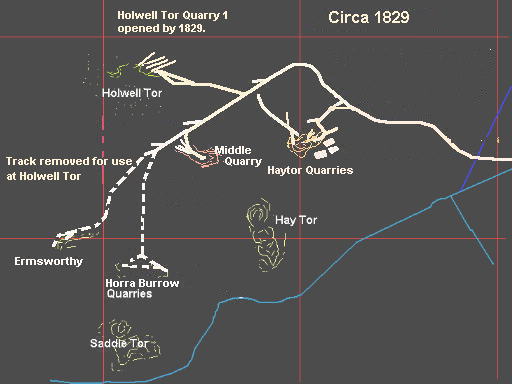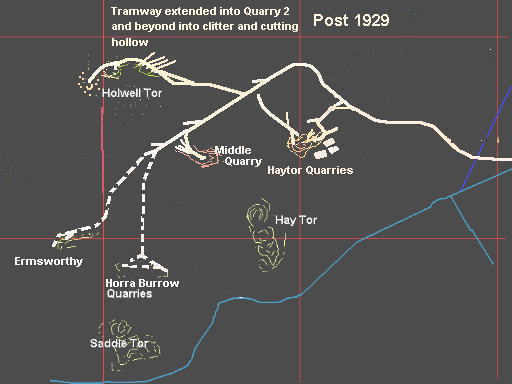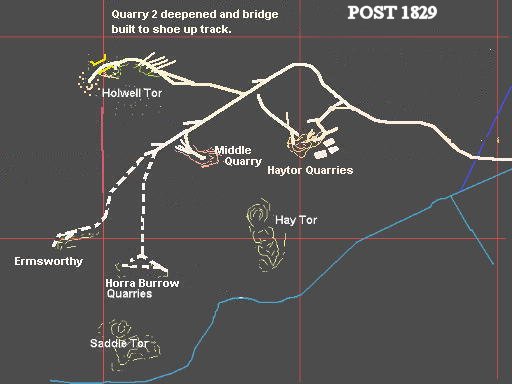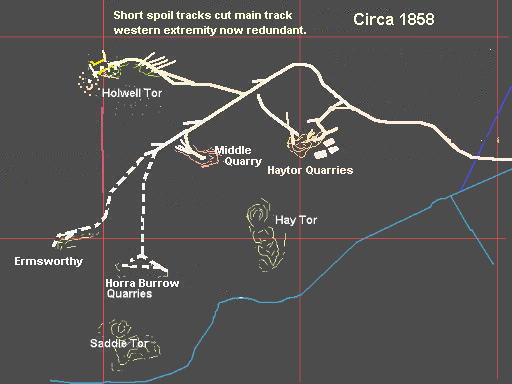|Helen Harris (1994) |Phil Newman et al (1999)| |Todd Gray (2001)| |
|
Phase 5, Holwell Tor Quarries
Phase 5 involved opening up Holwell Tor
Quarries (site 4) and building a tramway to them
by 1829. A print by T.H Williams in Harris (1994)
shows Holwell Tor Quarry 1 open in 1829. Bearne's map of 1840 also shows the
quarry to be open by 1840.
Setts will have been lifted from the tramway leading to the more westerly
quarries past Rubble Heap. Reasoning for this thinking has already been
discussed.
It is likely that there were stables at this Quarry, for the housing of
the horses that were to pull the wagons left in the siding overnight. The
gradient from Holwell Tor Quarries to the main trunk of the tramway is alot
steeper than other parts of the tramway and this may well have been one of the
reasons for attempting to exploit the more westerly quarries at the expense of
Holwell Tor.
The two quarries and several working faces show very good quality stone, however
the sheer size of the rubble heaps does suggest an awful lot of waste and this may
well have been one of the reasons for the quarries' eventual commercial failure.
The four rubble disposal tracks in Quarry 1 show no indentations in
their present state to allow wagons to cross the main
track. It must therfore be assumed that the eastern quarry pre-dates the
western quarry and they were probably not worked at the same time. It is
however impossible to say when these changes took place. The main trunk
of the tramway was possibly re-laid after the first quarry had fallen into disuse.
|
The clitter seen after the second quarry may
well have been mined prior to the opening of the second quarry. The short
rubble tipping tracks at the western end of the quarry shows no signs of
allowing a wagon to pass this point and this track will have been laid
during the working life of the quarry after the clitter had stopped being
used as a rock source. A 'cutting hollow is again seen in the clitter
past Quarry 2.
As Quarry 2 was deepened the tramway to the clitter and cutting hollow had to be shored up. The main trunk of the tramway was later cut by further rubble tracks from quarry 2, meaning that the clitter was abandoned and only quarry 2 was in use during the later stages of the quarries' development. Middle Quarry and Haytor Quarry C may also have been operational during the later stages of the quarries' history between 1951 and 1958. M.C. Ewans'(1964) court rolls refer to "obstruction and damage to pasture by stone cutters on that side of Haytor Common called 'Horra Burrow', by dumping of refuse from granite cutting in 1857". Holwell Quarry 2 and the 'cutting hollow beyond may well have been the likely source for these complaints. |



